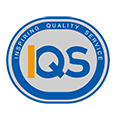Sampling is an important part of a random inspection, proper quality inspection sampling method to help achieve accurate shipment inspections
The sampling phase is often overlooked by many importers trying to cut back on inspection costs. However, the little money you save in forgoing some steps in inspection can result in your shipment incorrectly passing the requirement for a pass and you receiving a faulty inspection report you receive prior.
Once the shipment arrives and is full of defects, you will struggle to trace back what occurred to most of the products when in theory, your shipment was not properly sampled by the foreign inspector.
Below is a guide to help importers ensure proper quality control and take steps to guarantee shipment quality and trust worthy inspection report:

Breakdown of Proper Quality Inspection Sampling Method
· Evaluation/ Counting
The inspector needs to first estimate the quantity and determine what different locations and stages of production the items to be shipped are in: packed, unpacked or still in the production stage.
· Picking
The next step would have to be strategic. The inspector would need to pick cartons of samples from all sides of the carton piles: top, bottom and center. Sometimes, factory managers can be evil-minded and have their workers hide defective pieces at the bottom of the piles. To ensure that the picking covers a varied selection from everywhere, you can request that the inspector take and send photos/videos of the different cartons and batch numbers chosen for the inspection report.
· Lifting to Place of Inspection
A good inspector needs to be aware that the carefully picked samples he has set aside can easily be replaced during transportation by factory staff. If he is to turn away or be distracted, there is a high risk of his inspection report being inaccurate since low-quality samples or defective products can be dubiously replaced.
It is plausible to request that instead of beginning the inspection as the samples are still being transported, he waits to start the check for all cartons at once.
· Phase Two Picking during Inspection
Sampling needs to begin again when the carefully selected cartons from throughout the pile have reached the place of inspection. The inspector would need to take his time and do the job himself, selecting items from the top and bottom of each carton to add up to the requested sample size. This second round of picking is important since factory staff (under the direction of some manufacturers) often put all the high-quality samples on the top of each carton.
· Avoiding part-inspection/double sampling
Allowing the inspector to do his inspection in parts could also lead to an inaccurate passed` inspection report. Because of the risk of fowl play from the factory, early inspection which is ultimately carrying out a first sampling on say 60 or 80% of the shipment, then a second sampling when the 100% of products to be shipped are ready can highly increase the chances of getting substandard or defective products.
Conclusion
Regardless of the precautions you may take, there will always be the risk of receiving imports that do not meet your expected standards. Sampling needs to be thorough for all pre-shipment inspections and you would need to hire a reliable local QC firm that has qualified inspectors for the category of goods in your shipment. Skipping the sampling stage is common when you have used the same suppliers for a long period, but is often not worth the risk to save some costs.




